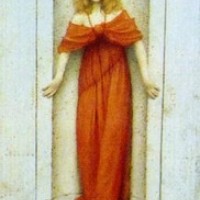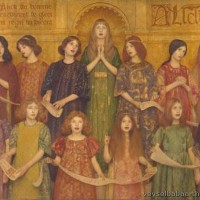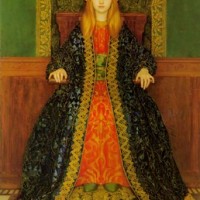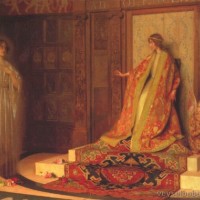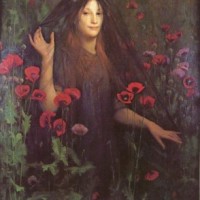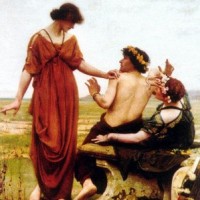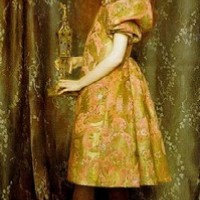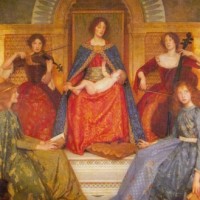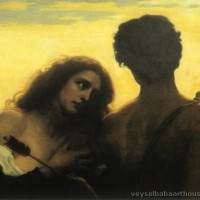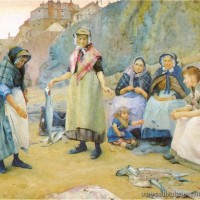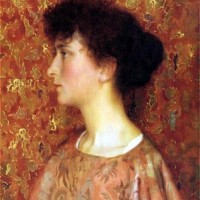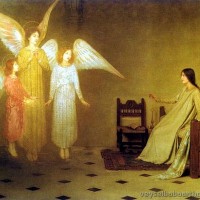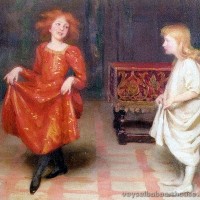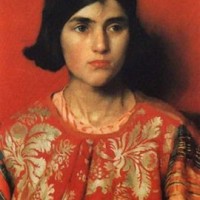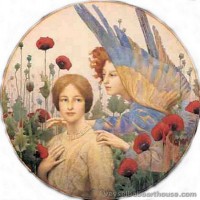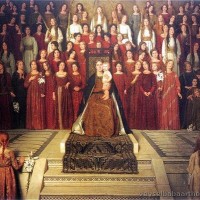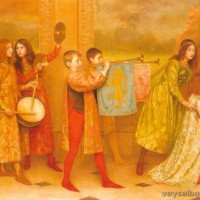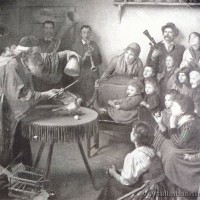- Home
- ABOUT US
- ABOUT VEYSEL BABA
- REDFOX ART HOUSE VIRTUAL TOUR
- MY LAST WILL TESTAMENT
- NOTES ON HUMANITY AND LIFE
- HUMAN BEING IS LIKE A PUZZLE WITH CONTRADICTIONS
- I HAVE A WISH ON BEHALF OF THE HUMANITY
- WE ARE VERY EXHAUSTED AS THE DOOMSDAY IS CLOSER
- NO ROAD IS LONG WITH GOOD COMPANY
- THE ROAD TO A FRIENDS HOUSE IS NEVER LONG
- MY DREAMS 1
- MY DREAMS 2
- GOLDEN WORDS ABOUT POLITICS
- GOLDEN WORDS ABOUT LOVE
- GOLDEN WORDS ABOUT LIFE
- GOLDEN WORDS ABOUT DEATH
- VEYSEL BABA ART WORKS
- SHOREDITCH PARK STORIES
- EXAMPLE LIVES
- ART GALLERY
- BOOK GALLERY
- MUSIC GALLERY
- MOVIE GALLERY
- Featured Article
- Home
- ART GALLERY
- Thomas Cooper Gotch
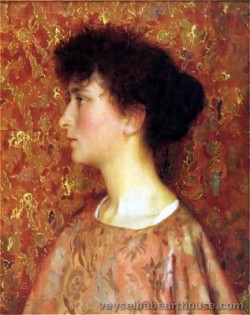
Thomas Cooper Gotch
Thomas Cooper Gotch or T.C. Gotch (1854–1931) was an English Pre-Raphaelite painter[1] and book illustrator, and brother of John Alfred Gotch, the architect.
Gotch studied art in London and Antwerp before he married and studied in Paris with his wife, Caroline, a fellow artist. Returning to Britain, they settled into the Newlyn art colony in Cornwall. He first made paintings of natural, pastoral settings before immersing himself in the romantic, Pre-Raphaelite romantic style for which he is best known. His daughter was often a model for the colourful depictions of young girls.
His works have been exhibited at the Royal Academy, Royal College of Art and the Paris Salon.
Personal life
Thomas Gotch was born 10 December 1854 in the Mission House in Kettering, Northamptonshire.[2][3][4] He was the fourth son born to Mary Ann Gale Gotch[5][6] and Thomas Henry Gotch (born 1805), who was a shoe maker.[3][4][nb 1] He had an elder brother, John Alfred Gotch, who was a successful architect and author.[5]
In 1881 he married fellow art student Caroline Burland Yates (1854-1945) at Newlyn's St Peter’s Church. His daughter, Phyllis Marian Gotch was sometimes a model for her father.[3][nb 2] After completing his studies, Gotch travelled to Australia in 1883.[2] Gotch and his wife settled in Newlyn, Cornwall in 1887. The couple and their daughter were key participants in the Newlyn art colony.[2][3]
In addition to his time spent in France and Belgium while studying art, Gotch also travelled to Austria, Australia, South Africa, Italy and Denmark.[4]
Thomas Cooper Gotch died on 1 May 1931 of a heart attack while in London for an exhibition, and he was buried in Sancreed churchyard in Cornwall.[2][7]
Education
With his parents' support,[4] in 1876 and 1877 he first studied at Heatherley's[8] art school in London and then at Koninklijke Academie voor Schone Kunsten in Antwerp in 1877 and 1878. Then in 1879 Gotch attended Slade School of Fine Art with Alphonse Legros in London. Gotch met his friend Henry Scott Tuke and his future wife Caroline Yates at Slade. After their marriage, Thomas and Caroline studied in Paris at Académie Julian and Académie Laurens in the early 1880s. It was in Paris that he adopted the plein-air approach of painting outdoors.[2][3][9]
Career
In Newlyn he founded the Newlyn Industrial Classes, where the local youth could learn the arts & crafts. He also helped to set up the Newlyn Art Gallery, and served on its committee all his life. Among his friends in Newlyn was fellow artist Stanhope Forbes[2] and Albert Chevallier Tayler.[10]
In Newlyn, like other art colony artists, he used the plein-air approach for making paintings outdoors. He was also inspired by James McNeill Whistler's techniques for creating compositions and paintings.[9]
His style changed following an 1891-1892 a visit to Paris and Florence; His works were transformed from the Newlyn "rural realistic" style to a Pre-Raphaelite style that embraced more vibrant, exuberant colours and "returned to allegorical genre painting". His first such painting was My Crown and Sceptre made in 1892,[2][3][9] Commenting upon his new style, Tate said:
His new combination of symbolic female figures, decorative Italian textiles and the static order of early Renaissance art finally brought him recognition.[9]
On the provisional committee for the 1895 opening of the Newlyn Art Gallery, Gotch exhibited The Reading Hour and A Golden Dream at the inaugural exhibition.[2]
Chris Leuchars for Project Kettering has said of Gotch's work:
Although Thomas Gotch is not widely recognised in international art histories, his position and friendships in Newlyn, and the mastery of his artwork, provide him some level of recognition in British painting history and his works make valuable contributions to collections around the world. He has work in key collections in Australia, New Zealand, South Africa and the United Kingdom.[4]
Thomas Gotch was a recognised success during his lifetime and enjoyed considerable public acclaim. He was a regular exhibitor at London's Royal Academy and contributed to numerous other national and international exhibitions. His works are still regularly exhibited and are often the subject of academic studies.
Over his artistic career Gotch was also a model for other artists. For instance, he modelled for illustrations of King Arthur's Wood for Elizabeth Forbes.
